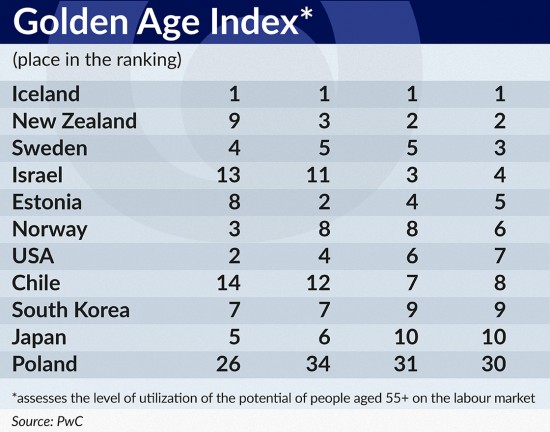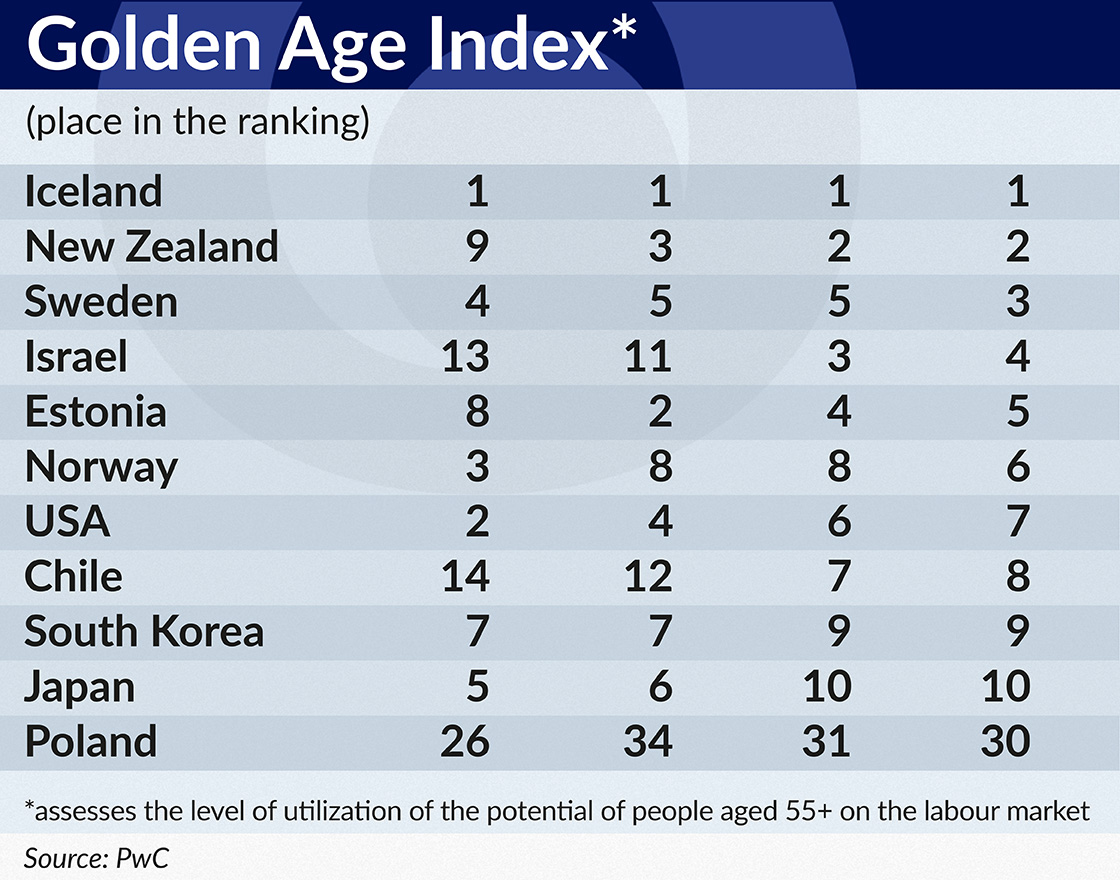German automotive industry at a crossroads
Category: Business

(Huskyherz, CC)
A higher rate of employment would significantly increase Poland’s GDP – the authors of the PwC report estimate.

The Golden Age Index ranking covers 34 countries of the OECD, evaluating them on the basis of selected key indicators, i.a. the number of employed persons over 55 years of age, their earnings and participation in training or the number of part-time employment contracts.
Iceland has consistently took the first place in the ranking since 2003. The second and third place were taken by New Zealand and Sweden. Poland was ranked 30th (in the previous edition of the ranking in 2015 it ranked 31st).
PwC experts estimate that if the employment rate of people aged 55+ was higher the GDP of the OECD countries could increase by up to USD2.6 trillion annually. If the rate of their employment in Poland was the same as it is in Sweden, which took the third place in the ranking, our GDP would increase by 4 to 8 per cent.
Meanwhile, the average effective age of exit from the labor market in Poland is now 60.8 years. The same results were recorded in Greece. The labor market exit age is only lower in Belgium, Slovakia and France.
The employment rate in the 55-64 age group in Poland is 42.5 per cent. Lower rates are only found in Hungary, Slovenia, Greece and Turkey. On the other hand, the employment rate in the age group 65-69 is 9.7 per cent, which puts Poland at the 25th place among 34 OECD countries.
Poland is ranked at the bottom positions in almost all areas studied in the Golden Age Index, except for the relation of wages of older people to the younger age groups. It should be noted that compared to the results from 2003, most of the indicators are improving, but it is a pretty slow increase, said Mateusz Walewski, Senior Economist at PwC.
In his opinion in the subsequent years the employment rate of people over 55 years of age will increase. This is associated with the entrance into advanced age of people who were about 30 at the beginning of the economic transformation, and spent most of their professional careers already in the market economy. They are accustomed to flexibility and changing competencies, which allows them to stay on the labor market for longer, he adds.
The authors of the PwC report point three key issues that should be taken into account in the context of a better utilization of people aged 55+ in the labor market:




